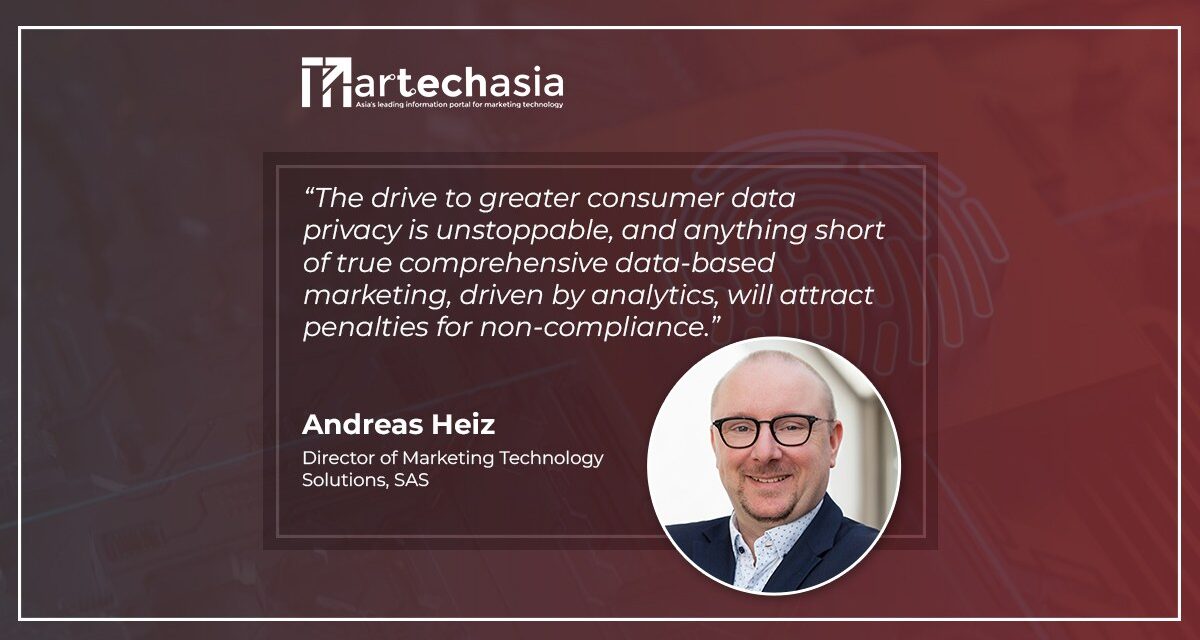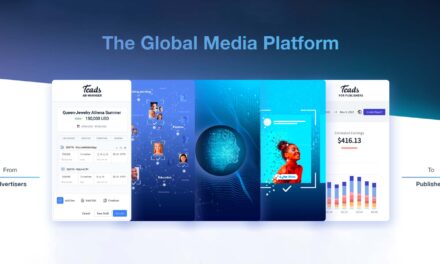Andreas Heiz shares various strategies on how businesses can foster customer trust, personalising customer interactions, by maximising on data that they already have.
For the longest time, marketers relied on third party cookies to accurately target consumers, derive insights into their preferences and behaviour, and deliver personalised ads.

Increasingly, they are losing this ability to target new consumers and augment existing customer data. The focus needs to shift towards attracting their target audiences and building trusting relationships with them.
Although several browsers have been blocking third party cookies for some time, it still came as something of a shock when Google announced in January 2020 that they planned to phase them out. This move was followed in March that year by Apple blocking such cookies on the Safari browser, by default. Firefox banned them, and Microsoft’s Edge also began gradually blocking them – meaning all the major browsers are now either blocking or planning to block third party cookies.
Reasons for Blocking Third Party Cookies
Why did these crucial players in the online world decide to do this?
In a blog post announcing the move, Google said: “Our goal for this open-source initiative is to make the web more private and secure for users, while also supporting publishers.”
However, given that blocking third party cookies means sacrificing some advertising revenue, perhaps the move is not entirely altruistic.
One reason for blocking may be user perception. Many users find cookies irritating and intrusive. They will say they don’t want to be tracked across the websites they visit – but in fact relatively few users actively choose to make opt-out the default.
Data Privacy
A more significant driver is the growth of regulation around data privacy. Europe’s GDPR does not explicitly ban them, but its regulations state that a website cannot store third-party cookies without the consent of its users. If the user denies consent, then the site must block it. In fact, it cannot load the cookie script before receiving consent. This complex approach puts the responsibility for checking compliance on publishers – it is simpler for them to avoid possible problems by blocking third party cookies altogether.
Regulators elsewhere in the world also typically closely follow the provisions of GDPR, although Singapore’s Personal Data Protection Act (PDPA) actually preceded it, being passed in 2012. The PDPA recognises both the need to protect individuals’ personal data and the need of organisations to collect, use or disclose personal data for legitimate and reasonable purposes.
In Malaysia, the country’s Personal Data Protection Act came into force in 2013. This Act revolves around end-user consent, requiring websites to obtain express and explicit consent from visitors before activating any cookies and trackers that process personal data.
First Party Cookie Power
A third, and rather compelling, reason for Google to block third party cookies is the power of their first party cookies. In 2021, Google accounted for an estimated 28.6 percent of the total digital advertising revenue generated in the United States and was the largest digital ad publisher in the country. After Google come Facebook and Amazon, with 23.8 and 11.3 percent, respectively. The network of first party information these sites control is overwhelming, given that the company dominates the market space with Android at 85% of the smartphone market and Chrome at 64% of the browser market.
So how are businesses to maintain the data-driven strategies that are so critical to their operations, in the face of the loss of cookies, increasing privacy regulations and the privacy initiatives being launched by big tech players? These latter include the Apple App Privacy Report, which allows users to track everything an app does, and what sort of data it has accessed.
Instead of focusing on reducing data acquisition costs, the imperative for marketers is to develop a first party data strategy, double down on identity management, and make the most of the data they do have by bringing real value to customers via personalizing interactions – which leads them to want to provide information. Understanding your customers and the preferences to engage with them in a meaningful way can help to create experiences that build loyalty.
Giving Users Value
Customer data is growing more valuable by the minute. Marketers need to become savvy and develop unique strategies to encourage customers to participate in a two-way dialogue and opt-in to data collection and analytics. The only way to accomplish this will be to optimize customer journeys, meeting them in real time with communications and content that provide demonstrable value.
The key to achieving this is “trust.” Companies are typically driven more by commercial advantage than by concerns about consumer data privacy, but the trajectory of increasing regulation around privacy means they will have no choice but to adopt strategies more protective of consumers’ data welfare.
One way to gain back some of the trust is to be transparent about what data is being collected and how it is being used. At minimum, marketers should be asking certain questions, such as: Do individuals know when data is being collected? Do they understand how it is being used, especially when AI or ML algorithms (where the decision parameters are less transparent) are making decisions? Can they easily get answers to their data-related questions? Is it easy for people to opt-out?
Seeking Consent Builds Trust
Consent is also an important element of trust. It is broadly accepted that companies should ask permission to communicate with their customers – this approach is termed “permission marketing.” Most privacy laws specify, using the GDPR definition, that consent should be ‘freely given, specific, informed, unambiguous’, and articulated by a ‘clear affirmative action’.
Marketing must move away from manipulating website visitors through soft opt-in processes, lack of opt-out, or simple blanket opt-in check box for all communication and analysis activities, and instead ask for and store consent on a more individualized action-oriented basis.
The marketer’s objective remains the same – to obtain information of value from the consumer. This requires something to be given back in return – in the new cookie-less world, some of the options that can be used are value-add services, contextualised, personalized content, and personalized offers.
A Customer Data Platform (CDP) can help marketers fully amplify the consumer profile, pulling in online and offline data, detecting digital events, and dynamically updating identities in real time. All of this helps personalize communications and deliver real value to the consumer.
For example, 1-800-FLOWERS.COM takes a data-driven approach to engage their customers, successfully utilising AI and machine learning on the SAS platform to calculate the next best offer across a myriad of digital marketing channels. Using analytical models to provide scoring, customers are shown personalised gift ideas based on their known preference and buying history. This contributes to campaigning efforts and can help drive customer engagement and loyalty.
It is crucial that marketers do not take the lazy step of just replacing third party cookies with an alternative tracking option. The drive to greater consumer data privacy is unstoppable, and anything short of true comprehensive data-based marketing, driven by analytics, will attract penalties for non-compliance.


















